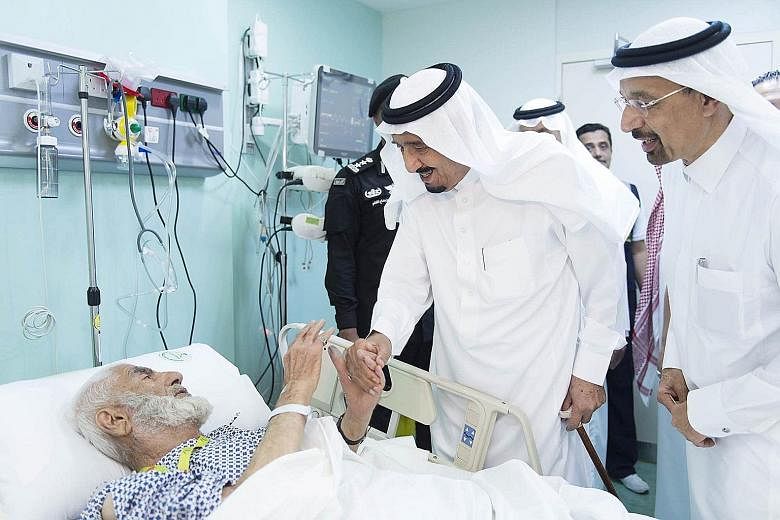MECCA • The deadly collapse of a construction crane in Saudi Arabia's holy city of Mecca has highlighted the controversial pace of high-end urban development in the birthplace of Islam.
Local media yesterday said 111 people have since died after Friday's tragedy when the crane toppled into a courtyard of the Grand Mosque, one of Islam's holiest sites, during a thunderstorm.
Saudi Arabia's King Salman visited the site on Saturday and vowed to find out the cause of the collapse.
The crane was one of several at the site in western Saudi Arabia where hundreds of thousands of Muslims from around the world have converged ahead of the annual haj pilgrimage later this month.
A multi-billion-dollar effort was launched four years ago to expand the mosque to accommodate increasing numbers of pilgrims.
But even as the expansion of the Grand Mosque is widely welcomed to cope with the influx, modern urbanisation around the mosque has garnered criticism. Towering over the place of prayer, a different type of development has taken shape - gargantuan commercial projects which critics say have erased Mecca's heritage and threatened its spirituality.
Local authorities defend the city's urban projects, which include rail and road improvements, as a modernisation effort that makes visitors more comfortable.
"Mecca is not any ordinary city," said Mr Irfan al-Alawi, co-founder of the Mecca-based Islamic Heritage Research Foundation. He is concerned the many skyscrapers are "making it look like Manhattan".
Chief among them is the 76-storey Mecca Royal Clock Tower and the Abraj al-Bait complex attached to it. One of the world's largest buildings in terms of floor space, it has six towers housing luxury hotel rooms and a shopping mall.
Pilgrims leaving the mosque are bombarded by advertisements on the facades of the nearby buildings.
"Here we are dynamiting mountains to make way for big, huge skyscrapers such as the clock tower," said Mr Irfan.
"People visit the Grand Mosque to worship and to have spirituality linked to God. But it's become a holiday resort," he said.
AGENCE FRANCE-PRESSE, XINHUA

